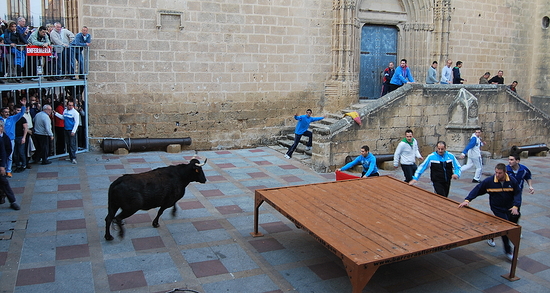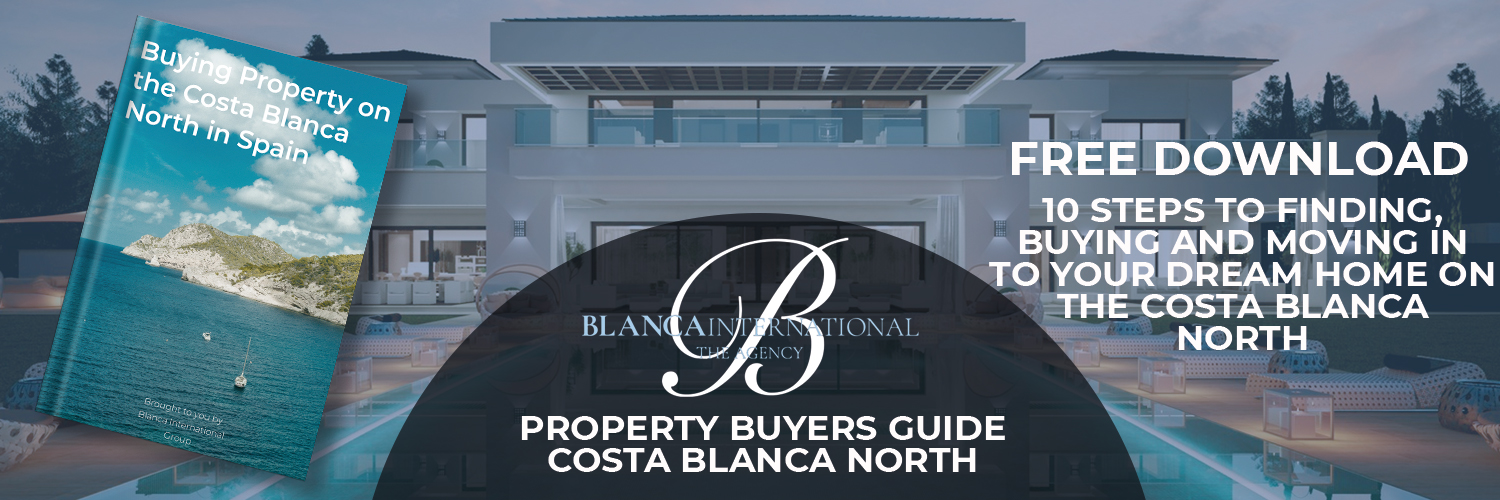Few foreigners know that San Sebastian is the patron saint of Javea. You could easily attend the week of festivities surrounding the San Sebastian feast day – 20th of January – and have no idea what everyone is celebrating about.
In fact, it was only in 2012 that a dedicated group of Javea historians resurrected the forgotten feast day and made it one of the highlights of the Javea festival calendar. As it turns out, many Javea locals had forgotten the story of San Sebastian too.
Picture credit: Xabia.org
Also read: Javea Festivals
When is the San Sebastián festival in Javea?
The week leading up to the 20th of January.
Where is the San Sebastián festival in Javea?
Around the Plaza de la Iglesia and the Plaça de Baix, in the old town of Javea.
What’s the highlight of the San Sebastián festival in Javea?
Depending on your taste:
- The offering of flowers at the two niches honour San Sebastián in Javea, at 7:30pm on January 20th
- Bull-running in the Plaza de la Iglesia in the week running up to the 20th of January
- Enjoy drinks and tapas with friends in the bars surrounding the Iglesia de San Bartolomé in Javea old town
History of the San Sebastian festival in Javea – the ‘dispeller of the pestilence’
The reasons why San Sebastian became Patron de Javea are so steeped in history, myth and legend that you won’t find them on Wikipedia.
But a few surviving historical documents set the scene: while neighbouring Denia suffered some of the worst outbreaks of the bubonic page in all of Alicante, Javea remained miraculously untouched.
While the city of Elche further south lost a quarter of its population to the Black Death, the population of Javea actually doubled from 930 people in the early 16th century to 1,800 people in the 17th century – a miracle attributed to worship of San Sebastian.
From at least 7th century AD, Christian populations had venerated San Sebastian as the ‘dispeller of the pestilence’. Many works of art depicted plague sufferers as dying under a shower of arrows from a heavenly executioner – a symbolism which matched with the life of San Sebastian, who was tied to a stake and shot with arrows after suffering persecution in the third century in Rome.
Two niches with depictions of San Sebastian wounded with arrows exist in Javea close to where the old gatehouses of the walled town used to be.
San Sebastian, it was believed, saved Javea from any trace of the plague trying to enter.
The festival of San Sebastian in Javea
The feast day of San Sebastian is on January 20, and every year in Javea festivities run on for a week surrounding this important date.
The tourism portal of Xabia tells us that ‘until recent years’ the day was honoured with a solemn Mass and perhaps the odd line of ‘firecrackers’.
But since 2012 – when Javea celebrated 400 years of being named a Royal Town by Felipe III – the festival of San Sebastian in Javea is honoured with the running of bulls in the square around Javea’s central San Bartolome Church, street parades with music, children’s performances, sporting events and the offering of flowers to the two niches of San Sebastian.
You can soak up the atmosphere in the tapas bars and restaurants in the Plaça de Baix – a central square right below the Church – while the La Llum nightclub often has special themed nights.
Events begin on January 20 with an 8:30am ‘despertà’ or ‘wakeup’ which announces the start of the San Sebastian festival in the old town of Javea. The offering of flowers at the San Sebastian niches takes place at 7:30pm with a Mass held at 8pm in the San Bartolome church.
The following Saturday will feature children’s tales in the morning, while the Sunday often features a cycling event in honour of San Sebastian.
From 6pm each evening between January 20th and the weekend, participating cattle ranches will release cows and bulls into the square surrounding the Church at 6pm and 11pm. On Saturday and Sunday there is typically an extra bull running event at 11:30am.
(NOTE: bull runs in Javea are called Carrer de Bous, and while controversial do not feature the ceremonial killing of any animals.)
5 things you didn’t know about the San Sebastian festivals in Javea
- San Sebastian is the first ‘taurino’ or bull running event of the year in Javea, taking place in the week of January 20th.
- The San Sebastian festival in Javea is not the first festival of the year – that’s the feast day in honour of San Antonio on the 17th of January, where Javea locals bring their pets and animals to receive a blessing in the Javea old town.
- Javea shares a plague-related patron saint with the nearby town of Elda, where worshippers prayed to an imagen of the Virgin Mary for deliverance from the Black Death.
- Both venerance of the Black Death and the actual bubonic plague itself originated in Italy – the regions of Sicily, Naples and Sardinia were in fact part of the Catalan and Valenciano-speaking Crown of Aragon throughout the 16th century, during the height of the plague in eastern Spain.
- Denia was a major commercial port in the Crown of Aragon, and was one of the most affected towns by the plague – meanwhile Javea miraculously saw its population double during the worst 100 years of the pandemic.


